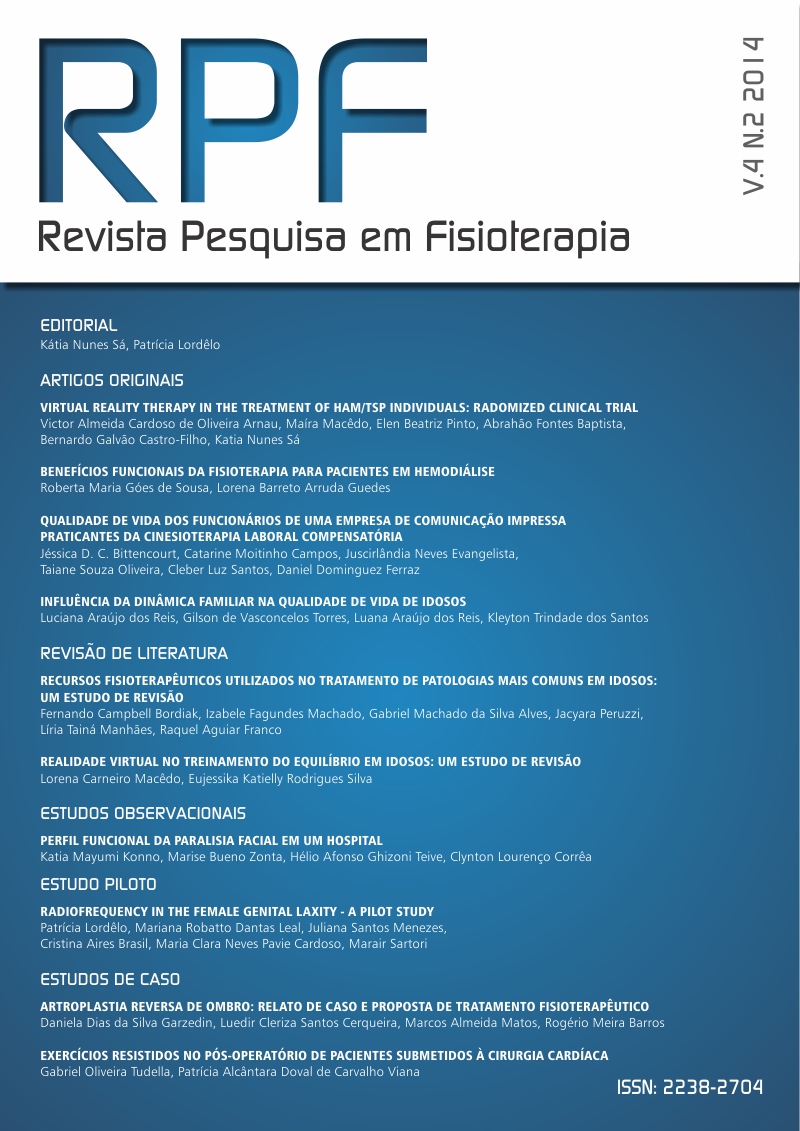VIRTUAL REALITY THERAPY IN THE TREATMENT OF HAM/TSP INDIVIDUALS: RADOMIZED CLINICAL TRIAL
DOI:
https://doi.org/10.17267/2238-2704rpf.v4i2.447Palavras-chave:
HTLV-1, HAM/TSP, Therapeutic exercises, Virtual therapy, BalanceResumo
Introdution: The myelopathy associated with HTLV-1 or tropical spastic paraparesis (HAM/TSP) is a chronic, progressive demyelination disease that predominantly affects the spinal cord. The balance and locomotion in affected individuals are compromised and require therapeutic alternatives for rehabilitation. Objective: To determine the effect on aspects of balance, pain and quality of life for the use of virtual reality as an additional therapeutic option in the treatment of patients with HAM / TSP. Methodology: Randomized double blind clinical trial was conducted with nine individuals with the diagnosis confirmed by WHO criteria, divided into a group that performed a protocol of therapeutic exercises and another added that the exercise protocol, four games to virtual reality. All participants underwent an evaluation of the balance by Berg scale, of pain by visual analogical scale (VAS) and quality of life by SF-36 before and after 10 sessions. Results: The group that performed exercises with virtual therapy showed improvements in balance (p=0.033), functional capacity (p=0.010) and emotional aspects (p=0.004) in the intragroup analysis and the emotional aspects on intergroup analysis (p=0.027). Conclusion: Virtual reality did not reduce pain intensity but demonstrated a positive impact on the emotional aspects of quality of life.



